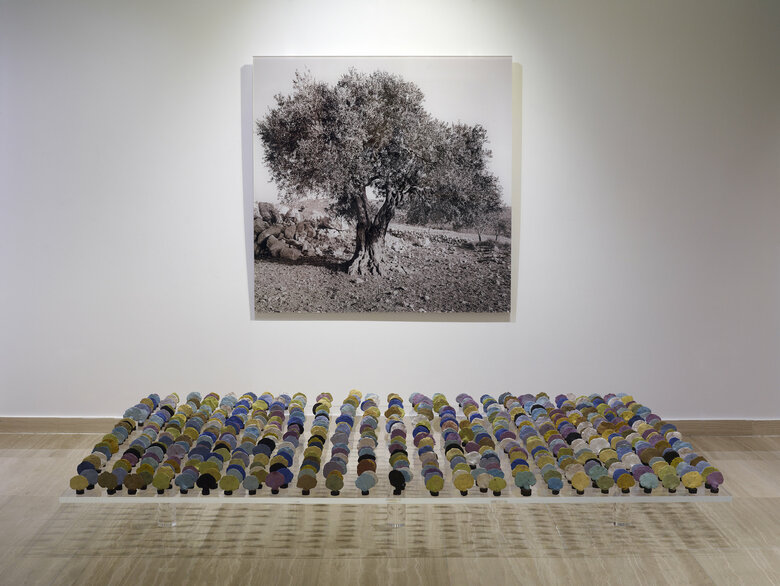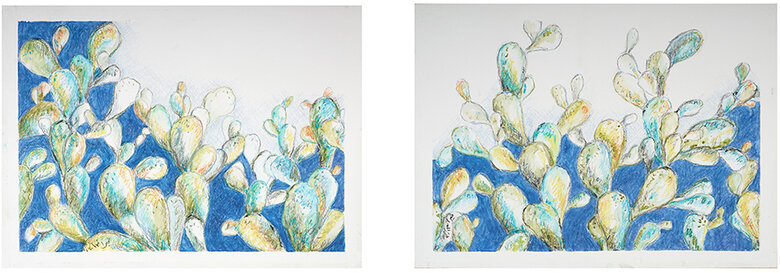Vera Tamari’s Four Seasons is a sculptural meditation on nature’s cycles, transformation, and resilience. Through abstract forms and layered textures, the series captures the essence of spring, summer, autumn, and winter. Each piece, crafted from earthenware clay and finished with colored slips and acrylics, expresses the unique qualities of its season while connecting to Tamari’s deep appreciation for the land and its rhythms.
Spring unfolds with soft, flowing forms, evoking nature’s awakening. Its pastel tones suggest new beginnings, growth, and renewal.
Summer stretches upward, full of energy, like plants reaching for the sun at their peak. The sculpture’s warm colors reflect abundance, heat, and life in full bloom.
Autumn carries a quiet strength, marked by rich textures and earthy hues. It symbolizes ripening, change, and preparation for the cycle to begin again.
Winter captures the raw power of nature, with swirling lines that suggest wind, rushing water, and stormy skies. Its cool tones remind us that even in the stillness of winter, the earth is preparing for what’s next.
Four Seasons embodies Tamari’s artistic philosophy, one deeply rooted in material, memory, and the land. A pioneer in Palestinian ceramic art, she saw clay as more than a medium; it was an extension of the earth itself, fragile yet enduring, mirroring the resilience of her people. Her sensitivity to clay’s transformative nature, its malleability in the hands, and hardening in the kiln, echoes the Palestinian experience of displacement, adaptation, and perseverance.
Tamari’s artistic and political engagement are inseparable. As the only female co-founder of the New Vision Movement in Palestine, a collective formed in 1987 following the First Intifada, she played a critical role in reshaping Palestinian art. Alongside Sliman Mansour, Nabil Anani, and Tayseer Barakat, she sought to move beyond traditional nationalist imagery, integrating contemporary artistic discourse while remaining deeply tied to Palestinian heritage. The movement embraced local materials, clay, wood, and natural pigments, as a means of grounding their work in the land itself.
Unlike her male counterparts, who often portrayed nature as an idealized or static backdrop, Tamari viewed the landscape as dynamic, deeply personal, and infused with emotion. For her, nature was not just an aesthetic subject but a living force, constantly shifting and resonating with memory and experience. Rather than merely depicting the natural world, her works embody its rhythms, absorbing its vitality and translating it into texture and form.
Tamari’s use of earthenware clay reinforces the idea of rootedness, both physically and symbolically. The series speaks to the inevitability of change, yet also the enduring cycles of renewal and continuity. Through these works, Tamari reminds us that, like the land, identity is shaped by time, hardship, and transformation, but always carries the potential for regeneration.
Signed and titled in Arabic, and dated "2014" and inscribed "2/" in English, on the back

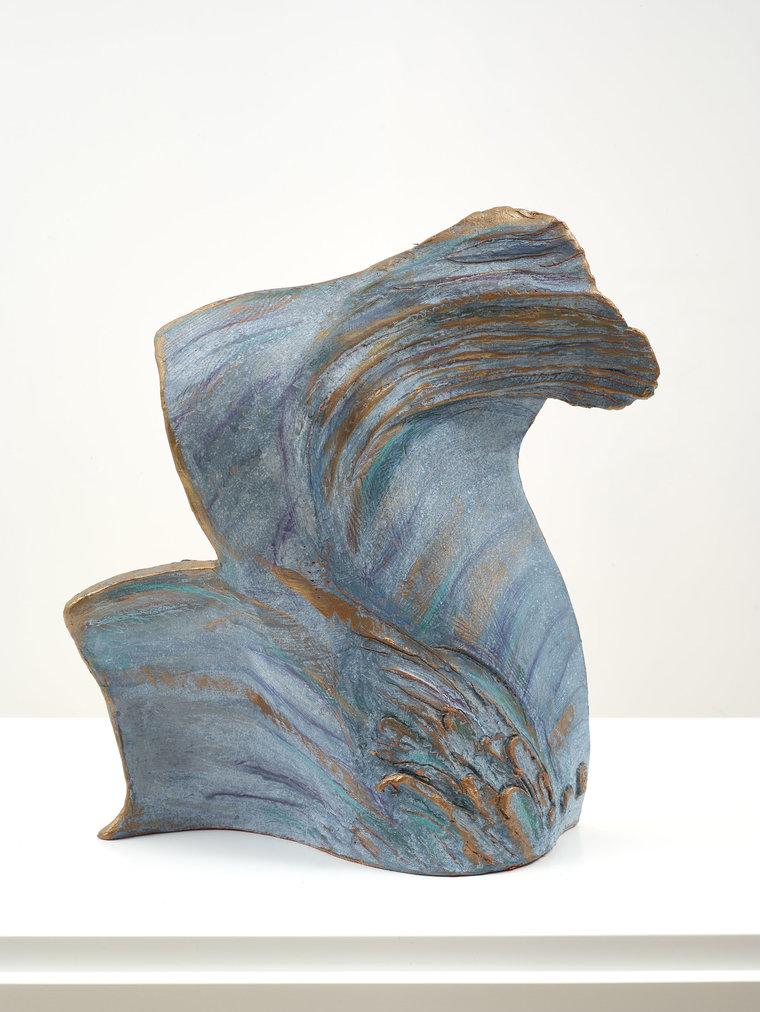

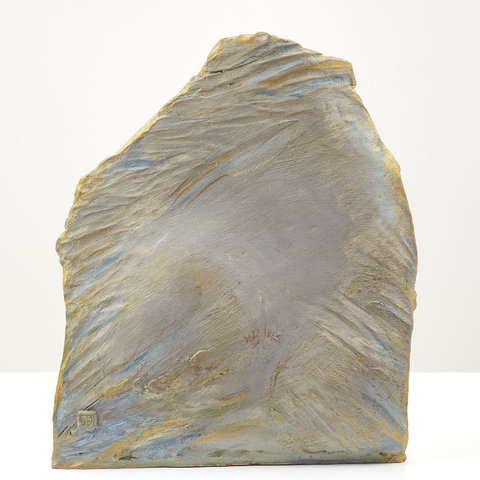
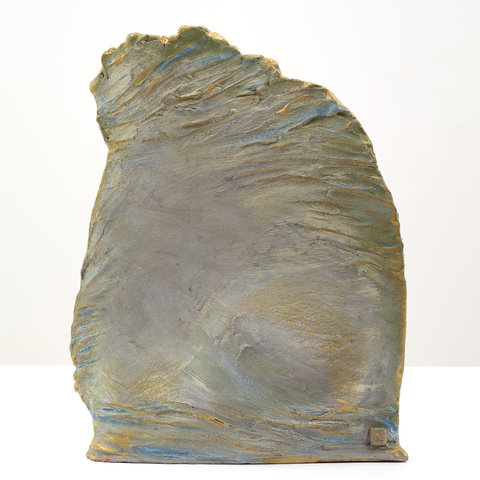
_VeraTamari_Front1.jpg)
